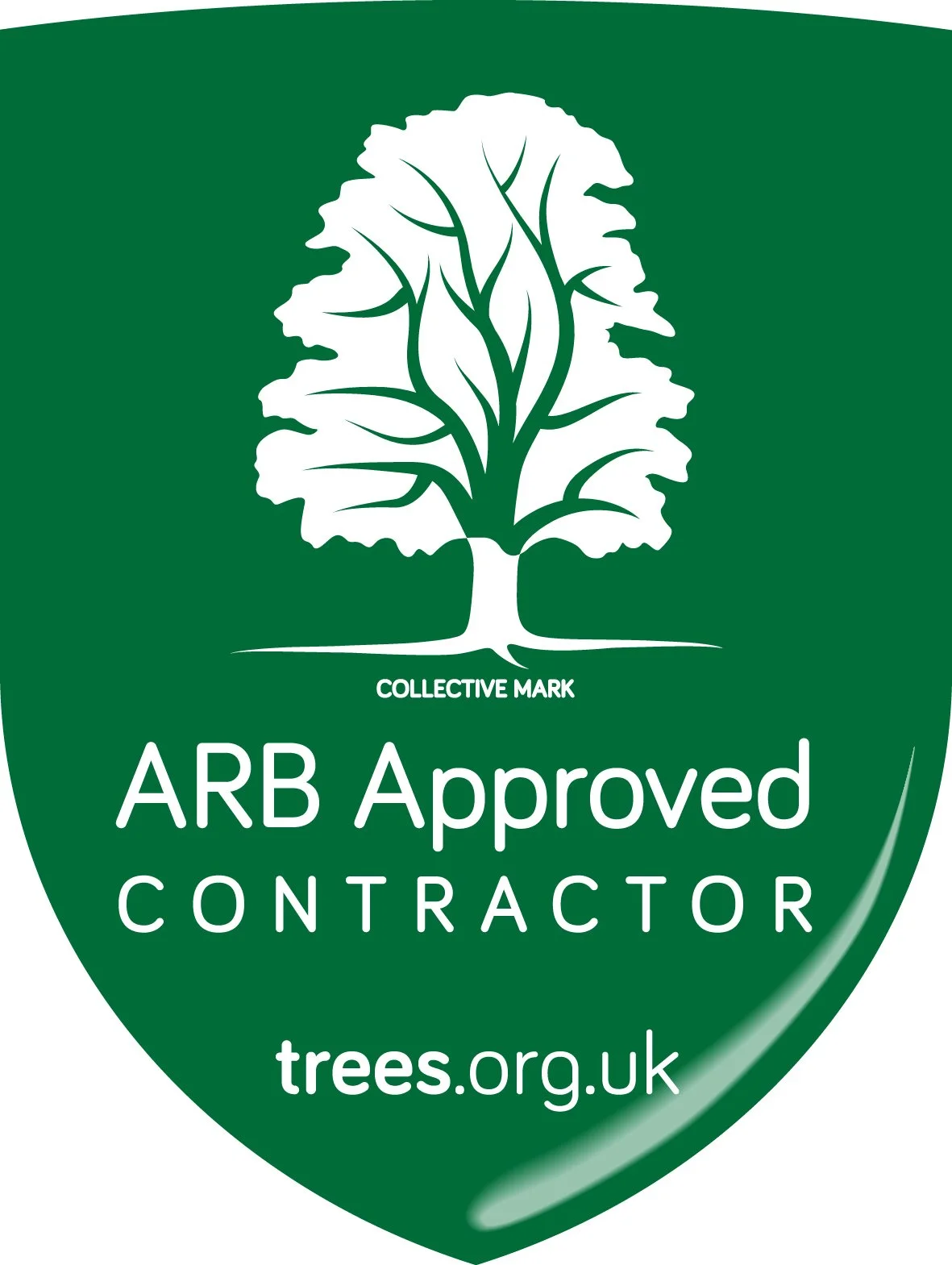With its delicate pink and white blossoms and delicious scent, the Crab Apple (Malus sylvestris) is one of our loveliest heralds of spring and an Ancient ancestor to the cultivated apple we are all familiar with. Widespread across Britain and Europe, Crab Apples are hardy, attractive little trees capable of living for up to 100 years, although today many of the wild apple trees you come across are more likely to be the offspring of a cultivated apple rather than the true wild Crab.
A Crab Apple in Scotland displaying a typical crown.
Clusters of delicate pink and white blossoms are a hallmark of the apple family.
Crab Apples are particularly notable for their gnarled, irregular shape, their spreading canopy and their tendency to develop “spines” on their twigs; it is thought that either this spiny look or the “crabbed” and short nature of the tree has lead to its common name. The bark is a grey-ish brown and is often flecked. The leaves are oval shaped with a clear point to them and a serrated edge. The profuse blossoms are white with a pink tint to the outside of the petal, with flowers growing in clusters or sprays. It can be very hard to distinguish a true Crab Apple from a wild growing cultivated descendent; tasting the fruits can be the best way to get and idea of how far from the wild tree the apple has fallen, as Crab Apple fruits are small and very tart and sour tasting, whilst trees which have grown from or become crossbred with a cultivated variety will have sweeter and sometimes larger fruits.
Considered by the Anglo-Saxons and Celts to represent love, marriage and healing, the Crab Apple is a pleasant tree to have in your garden, bursting into beautiful shows of blossom in the spring and attracting a large variety of wildlife throughout the year. It is also one of the few trees on which mistletoe is commonly found, and these two species seem to have a special relationship which has added to the mystique of the Crab Apple over the years. Devon in particular has a long folklore tradition attached to Crab Apples, with maidens on Dartmoor using Crab Apple fruits to “crab for husbands” by arranging the fruits in the initials of their suitors and then, at a later date, judging the potential faithfulness of their prospective suitors based on how rotted the apples forming their initials had become! Strings of Crab Apples were also sometimes hung over the hearth on the Twelfth Night to please the local pixies.
Crab Apple jelly is particularly known for its beautiful amber colour!
The fruits of the Crab Apple can be eaten, however a key difference is that Crab Apple fruits should be cooked before consumption as they are extremely tart when eaten raw and can even cause stomach ache when consumed without preparation! The fruits have a very high pectin content and make excellent preserves, also baking well and making a good companion to savoury dishes. Crab Apple wood has a lightly pink hue and an even texture, making it particularly suited to carving and turning, and it produces excellent firewood. The Crab Apple is very popular with pollinators and so is often planted alongside cultivated varieties in orchards to encourage pollinating insects.
Whilst it might be tricky to find a genuine wild Crab Apple in Devon, there are plenty of opportunities to visit local apple orchards and to appreciate apple tree blossom in the spring. Scrumping (picking apples from trees, usually illicitly) has a long tradition in Devon, and whilst we wouldn’t encourage you to pilfer from legitimate orchards, we would definitely recommend going apple picking, especially if you have kids. A number of orchards allow public picking and organise events in the autumn, such as South Yeo Farm West in Okehampton.
Image Credits:
Wild Crab Apple Tree, Michael Graham, 10th September 2014
https://commons.wikimedia.org/wiki/File:Wild_Crab_Apple_-_geograph.org.uk_-_4165110.jpg
Crab Apple Blossom, Lazaregagnidze, 29th April 2013
Screen Print of Apple Picking, Julian P. Guffogg, 11th April 2012
https://commons.wikimedia.org/wiki/File:Apple_Picking,_Screen_Painting,_Berwick_church_-_geograph.org.uk_-_2899086.jpg






